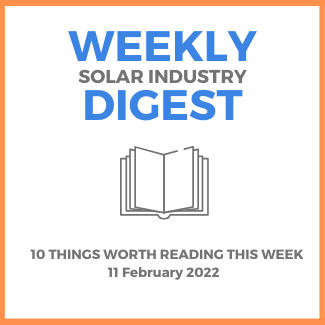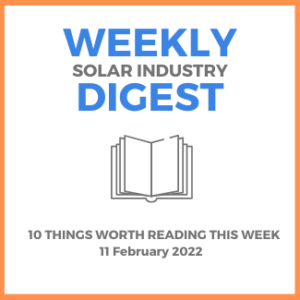The DOE announced several new initiatives to meet their target to achieve 20+ GW of community solar by 2021. These include a state’s collaborative, a credit ready solar initiative, and a tech assistance program. The Coalition for Community Solar Access outlined 7 needed actions to support this kind of growth. Also, 80 community solar providers committed to helping to reach that goal at a recent DOE community solar summit.
The solar data and software developer Solargis has put out a two-part white paper about achieving better albedo measurements for bifacial panels. Apparently the company has found that bifacial tech can produce 4-17% more solar power than traditional modules and accurate prediction about this kind of power output is key to the proliferation of bifacial projects – particularly in the tricky regions where there is snow and extreme seasonal climates. The report steps contractors and developers through the process of achieving this.
Sunnova and Generac are significantly widening the scope of their strategic partnership. Sunnova will add Generac’s new and updated hardware tech to its offerings – energy storage units and standby home generators, microinverters, and load managers. This move supports Sunnova’s desire to make their energy independent Sunnova Adaptive Home idea a reality. The integration points will be at Sunnova’s dealer network and through both companies’ software platforms.
Venture capitalist and former tech CEO Bill Nussey discusses a host of opportunities for solar and storage innovators in his new book “Freeing Energy.” The book consists of hundreds of interviews with industry players and touches on policy, soft costs, new buildings, dynamic customer pricing, latest tech innovations, the role of utilities, and more. Nussey does assert that the opportunities represent a market of at least a billion in revenue each year.
In the latest Suncast podcast episode we hear from Alex Williams, uber-effective solar sales innovator and co-founder of Solar Energy Partners. Williams discusses his approach to hiring and training 1000+ res solar sales folks, what brought him to solar and sales, and how he has been able to build one of the largest solar sales rep organizations in the country in less than 2 years. Says Suncast host Nico Johnson: “Despite Alex’s young age, I was blown away by his business acumen and insight.”
Solar Builder has unleashed its latest Buyer’s Guide for BOS components. Featured in the lineup are cable management and torque tube hangers from CAB Solar, Max XL from Snack Tray, Heavy Duty Lockit P Clamp from Heyco, Messenger Cable Hanger System from AWM, RC NEXT from HellermannTyton, and more. For each Solar Builder looks at materials, install info and key features.
California apartment buildings – and those of other states across the country – could be the future of rooftop solar. This is provided that the tech, policy and biz models line up correctly. Around tech that means having the ability to solve the split-incentive barrier (a lack of alignment between renters and property owners). In policy, at least in CA, the NEM reform will determine much. It also means models that embrace lower-income and disadvantaged residents. The software company Ivy Energy has been working on a solution that can apparently make rooftop solar work for multifamily housing.
A review of LA Solar Group’s recently developed panel manufacturing division reveals info about cost, background, quality and more. The popular installer company only recently started manufacturing their own solar panels in order to become vertically integrated, offer more competitive pricing and a strong warranty, and shelter themselves from supply chain issues. LA Solar’s panels have competitive wattages and efficiencies plus discreet aesthetics. They also cost $2.35-$2.95/W, which comes to about $14,100-14,700 for a 6 kW system.
There are five factors contractors should consider when seeking a financing partner: 1) Make sure they are an expert at preemptively handling issues that they know may pop up, 2) Look for trustworthiness and stability around customer experience, 3) Get training for your sales team from them, 4) Ensure they’re aligned with your non-negotiable values around customer financing, and 5) Check that there have variety in their offerings and an ability to meet the wants and needs of your customers.
Founder of solar maintenance and monitoring company Stable Solar Greg Sellers talks about what to keep in mind when buyers are looking to purchase a home that already has a solar system on it</a>. He covers issues like the role of the installer, necessary paperwork and what they should learn about the system. Greg also touches on inverter ownership, monitoring, legal constraints and roof issues. The video is just below and you can click to this post to see the full transcription of the video.


